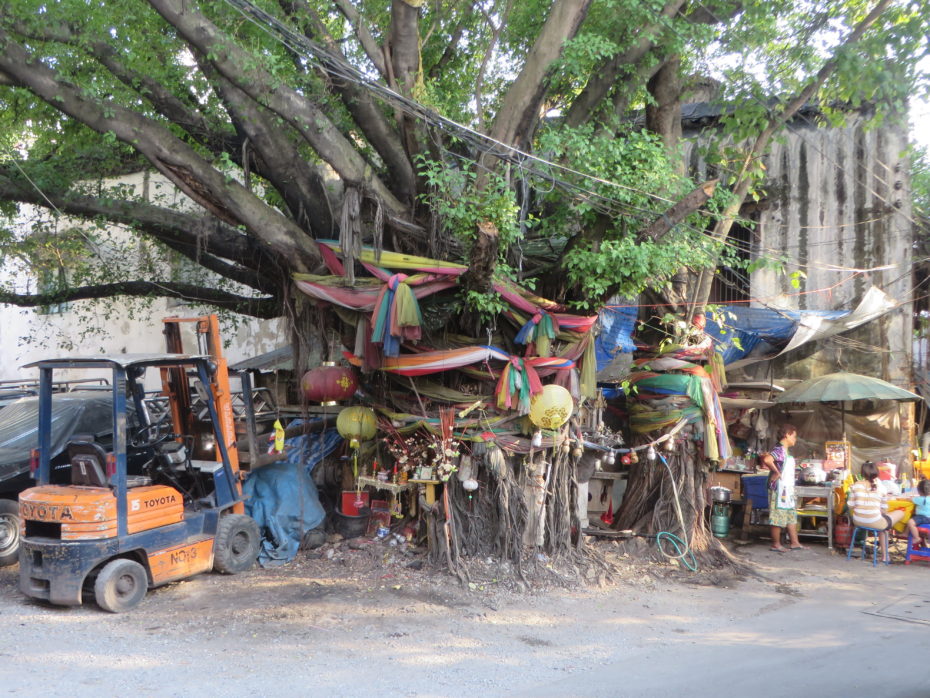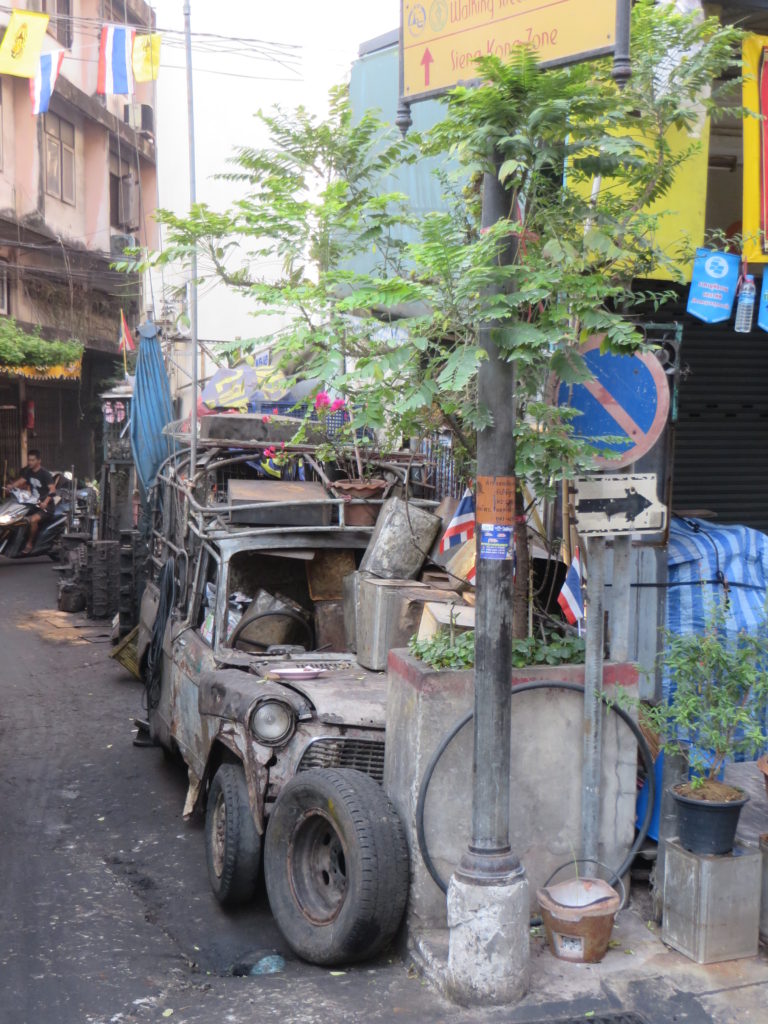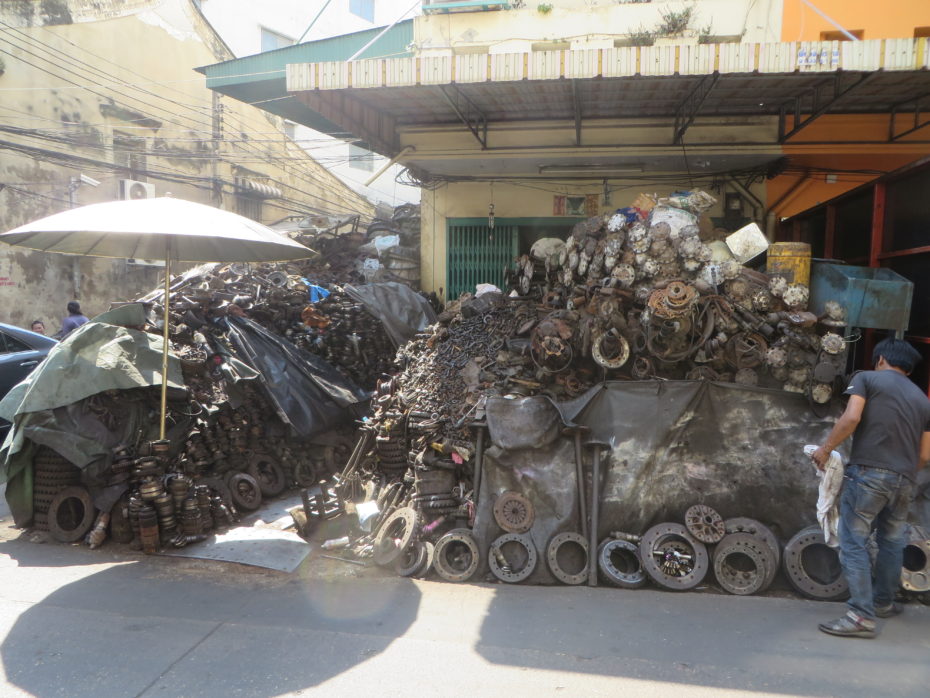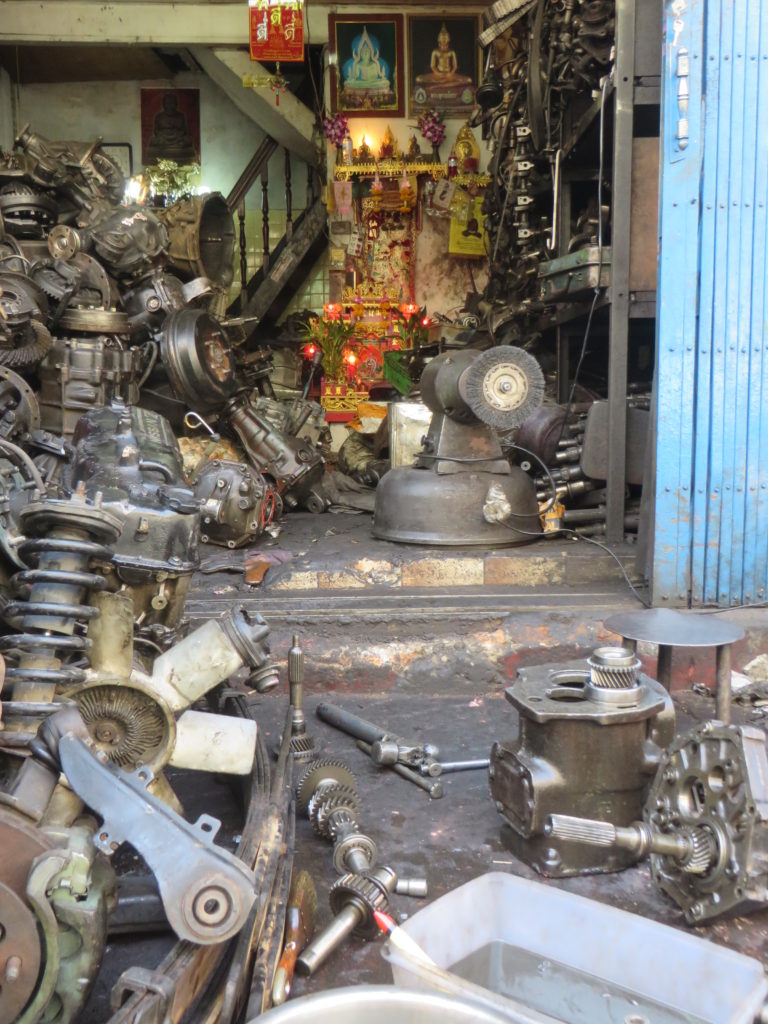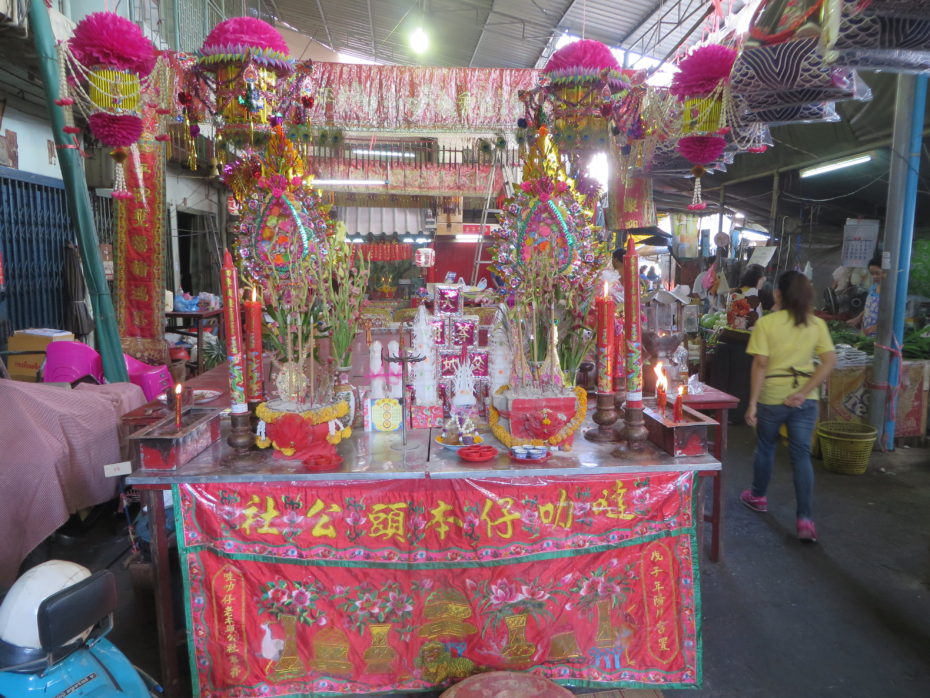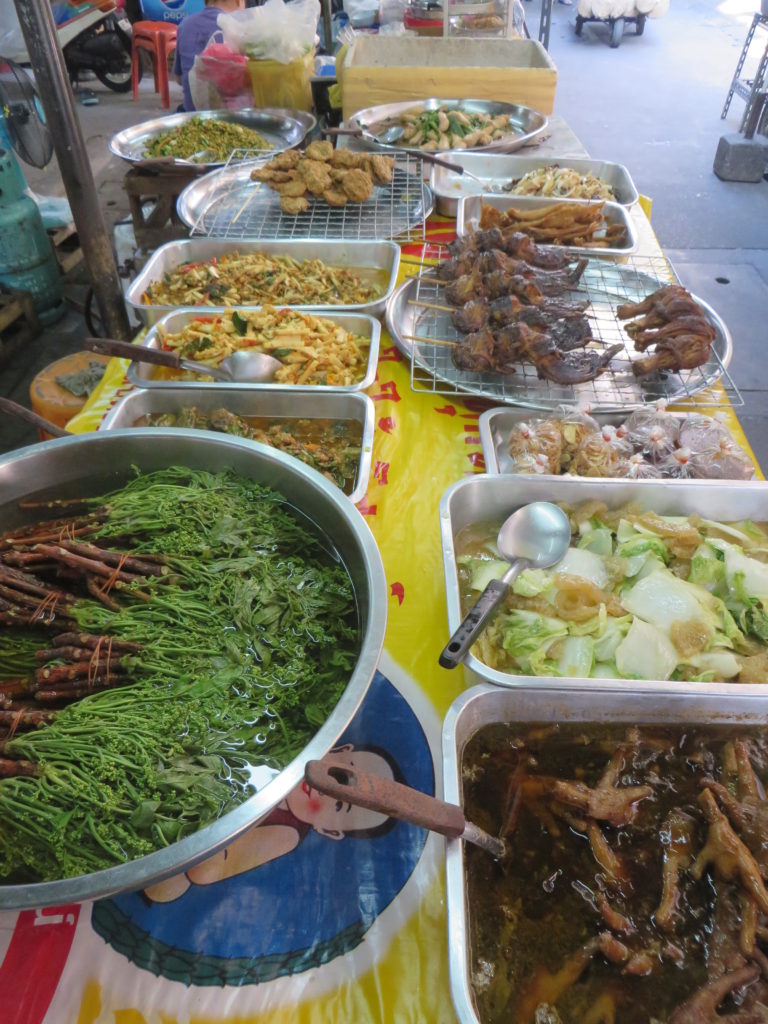When you are going in search of the soul of a city, it’s no good walking down boulevards, across grand squares or into great buildings. These echo with the voices of the rich and powerful: kings and bankers; generals and religious leaders who have forsaken their beliefs for a slice of power. You need to meander down the back streets and alley ways to meet the people whose city lineage goes back generations. It’s when the plan view of alleys seemingly has no more planning than that of a handful of noodles thrown on a plate that you know you are at the true heart of a city. This is where routes evolved one building at a time between competing claims of land ownership, before town planners, regulations and grand designs. This is Talat Noi.
A city the size of Bangkok has other souls of course but this is where the predominantly Chinese community used the Chao Phraya river’s link to the outside world to base their trading activities, after having to relocate from nearby when Bangkok proper was founded in 1782. China is sometimes viewed, at least at times, as having been an insular nation, closing itself off from the outside world but its traders had spread throughout the Indian Ocean, even as far as Africa before any European had sullied its waters. A practice that has continued ever since, such that it is said that every capital city in the world has a Chinese restaurant run by the trader’s fellow countrymen. In reality Bangkok is as much a Chinese city as Thai, given the crucial role they have played in its settlement and expansion. Chinatown, adjacent to Talat Noi is perhaps the largest of any city.
Ties between communities have not just been geographical, as Chinese and Thai have intermarried at all levels of society for centuries, creating a fully integrated culture. Adding to the mix were Vietnamese and Portuguese who have also left behind places of worship and tastes in the cuisine, although small group of Vietnamese and Cambodian Catholics still live in the area.
Centuries of organic evolution have replaced many of the buildings with progressively newer ones, whilst doing little to disturb the layout trod only by humans and animals at its origins. Alleys twist and turn, widen and narrow without reason. As the buildings have evolved so have the trades in them: the blacksmiths of old making pans and horseshoes are now metal work suppliers and processors of second-hand car spares, which are now the predominant businesses. Huge disordered heaps of greasy car parts grow ever larger, surely defying any logic of a filing system as they spill out of tiny workshops onto the pathways. If there exists a Chinese anally retentive gene there is precious little evidence of it in the confusion of Talat Noi.
Always glowing in the gloom of these grubby workshops are lights of a Buddhist shrine, their shimmering reds and golds a transcendent beacon amongst the hard metal and earthly grime. The exquisite, filigree ornaments and serpentine dragons of the many temples in the area, some dating back to the earliest days, might appear as the obvious testament to the faith but only when viewed from a distance. It is those modest shrines that more represent the all-encompassing role that Buddhism has to play in the community. The working day will only start after an offering, such as incense or a candle is lit to shine a positive light on the days activities. On pedestals in alleys, in niches in walls, on tables in markets, shrines and spirit houses (often embracing Chinese folk religion and ancestor worship) smoulder with incense and droop with garlands of flowers, daintily strung together by ladies plying their trade rarely further than a short walk away. Construction has still respected ancient sacred trees, which are bedecked in ribbons and with their own personal shrines for offerings. It is this total infusion of religion in life which reminds us that it was once the same in our own culture, where religion was inseparable from daily life, politics and society. Religion here provides an order and comforting regularity to their lives and if like all humans some fail at times in their dealings with others it provides a framework to bring them back to the fold. I may speak as an atheist myself but can we truly say that their lives are worse for having resisted our ardent secularism.
It’s hardly a scientific study, but in several days of wandering these streets and watching the world go by I never heard a harsh word spoken or a shout of anger. My greetings and smiles were always cheerfully reciprocated, vendors only charged me the going rate and no one shoved or barged their way through the multitude of narrow passages. Certainly not universal characteristics in the world’s capital cities.
Breakfast is undoubtedly the best time of day for exploring. It is at its glorious, chaotic busiest, with people from all walks of life tucking into their favorite dish and the choice is far greater than any Chinese menu you will have ever seen. It would take weeks of dedicated gluttony, although I did my best in my limited timescale to make a dent in the array on offer: from the blandest to the most fiery; the healthiest to the sweetest and most fat laden; from meat eaters paradise to vegan delight; there’s even a lady doing toast and jam! So as not to appear unsympathetic to all the local tastes I slurped my way through a bowl of chicken’s feet and noodles, not a traditional tourist choice judging by the reactions of the local ladies. However, if skin and cartilage isn’t your thing you may like to visit during the Vegetarian Festival held in September/October each year.
Businesses and homes dissolve into a single jumble as you peek into the little rooms opening onto the alleys. A single room can hold haphazard towers of goods; gas stove and obligatory wok; a table cluttered with business papers and children’s homework; toys and tools; a family sprawled on cushions but always the glow of a television and a shrine. Are these rival illuminations competing for preference in the modern home? If so I hope the shrine wins.




